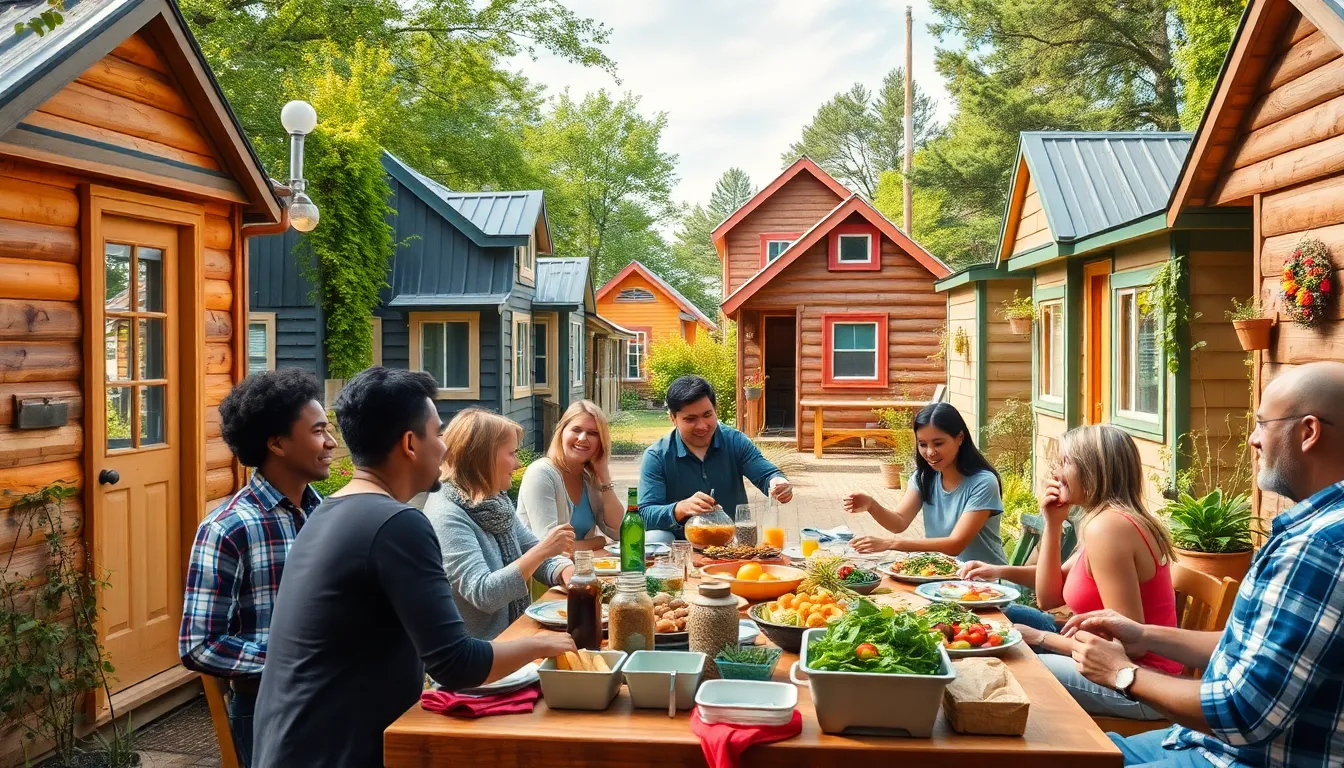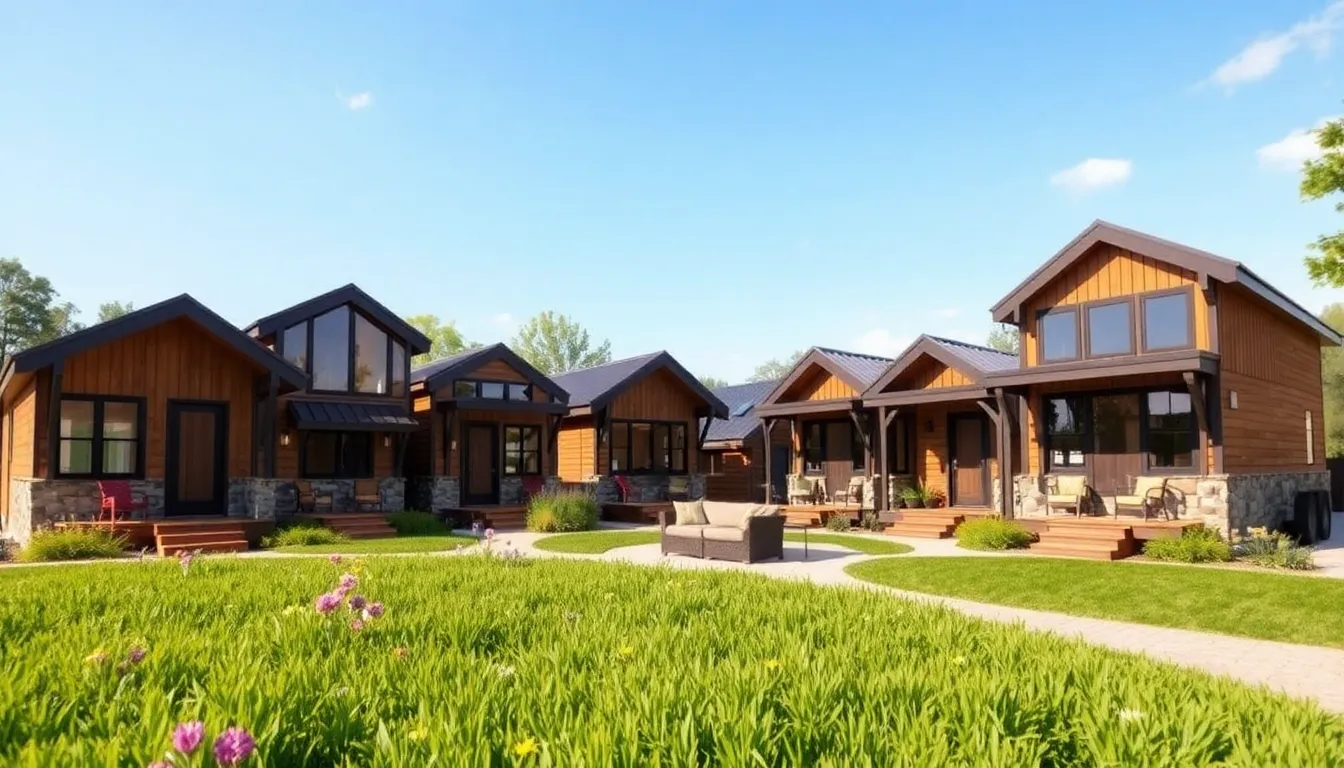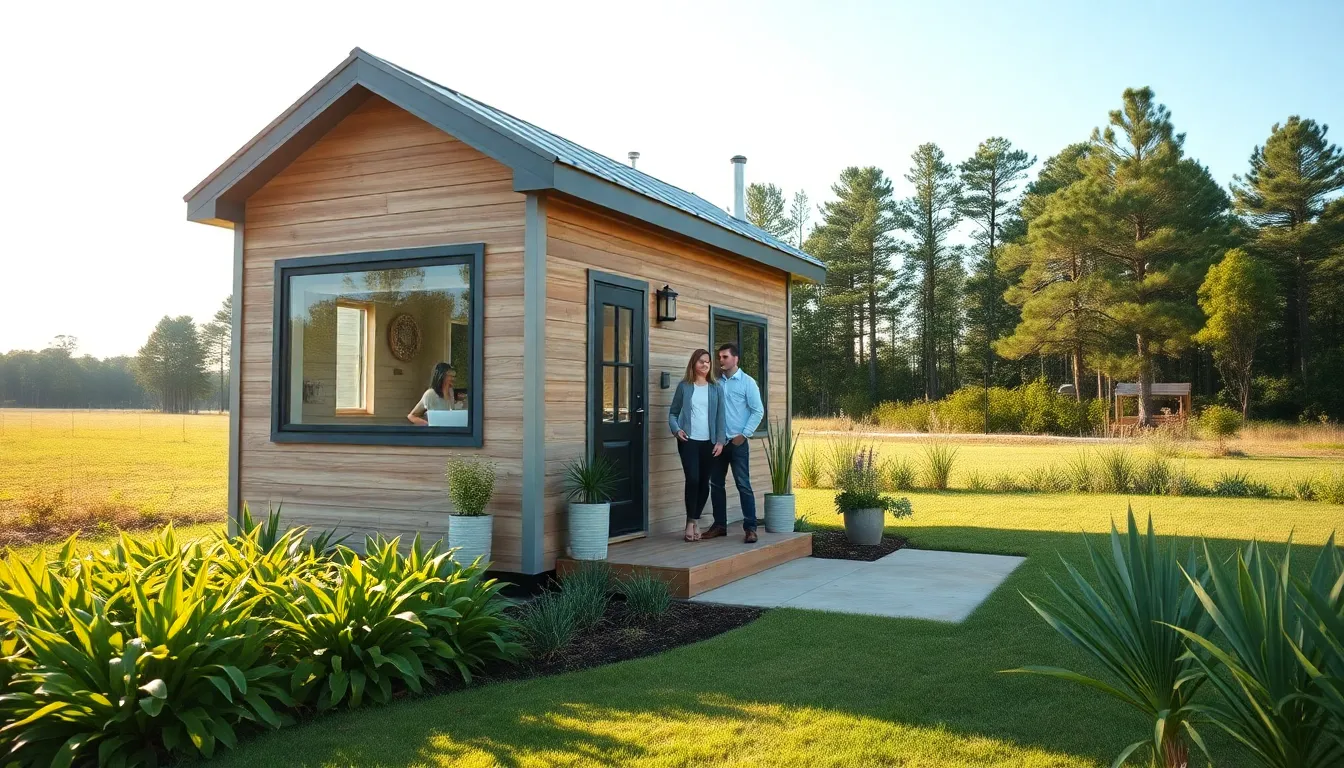In a world where bigger often seems better, tiny home villages are flipping the script. These charming communities prove that downsizing doesn’t mean sacrificing style or comfort. Picture this: cozy homes nestled in nature, neighbors who actually know your name, and the freedom to live simply without the burden of a mortgage that feels like a ball and chain.
Tiny home villages offer a unique blend of community, sustainability, and creativity. They’re not just a trend; they’re a lifestyle choice for those ready to embrace minimalism without losing their sense of adventure. So, if you’ve ever dreamed of living in a place where your biggest worry is whether to sip your coffee on the porch or by the fire pit, it’s time to explore the tiny home revolution. Who knew less could feel like so much more?
Table of Contents
ToggleOverview of Tiny Home Villages
Tiny home villages challenge the conventional idea of larger living spaces. These communities consist of small, efficient homes grouped together, encouraging a simpler lifestyle. Community members share resources, skills, and experiences, creating strong bonds and a supportive environment.
Many tiny home villages focus on sustainability. Residents often use eco-friendly materials and designs that minimize energy consumption. In these settings, individuals reduce their environmental footprints while promoting a culture of conservation.
Design plays a crucial role in tiny home villages. Each tiny home reflects creativity through unique architectural styles and custom interiors. The limited space encourages innovative storage solutions and multifunctional furniture, enhancing the living experience.
Affordable housing remains a significant concern for many. Tiny home villages provide an alternative solution to the expensive housing market. Individuals may find homes that fit within their budgets, allowing them to pursue financial freedom without the constraints of traditional mortgages.
Tiny home villages also attract adventure seekers. Those who value minimalism appreciate the opportunity to downsize their possessions and embrace a nomadic lifestyle. Various locations often host these unique communities, catering to diverse interests and enabling residents to explore different environments.
Residents enjoy numerous communal amenities in tiny home villages. Shared gardens, recreational spaces, and workshops foster a sense of collaboration and social interaction. Engaging with neighbors becomes part of daily life, enriching the overall living experience.
Benefits of Living in a Tiny Home Village
Tiny home villages offer numerous advantages for residents, from financial savings to environmental benefits. Such communities foster a lifestyle that is both meaningful and fulfilling.
Affordability
Living in a tiny home village significantly reduces housing costs. Many of these homes are priced much lower than traditional houses, allowing individuals to avoid hefty mortgages. Lower utility bills accompany smaller living spaces, providing additional savings. Residents appreciate less financial stress, enabling them to allocate funds towards experiences rather than material possessions. Opportunities for creative financing options can also enhance affordability.
Community Living
Community living thrives in tiny home villages. Shared spaces encourage interaction among neighbors, creating a supportive atmosphere. Residents often engage in communal activities, strengthening bonds and friendships. Bartering skills and resources fosters collaboration and enhances self-sufficiency within the community. Events such as potlucks or skill-sharing workshops promote social connections, making life more enjoyable. Each village instills a sense of belonging that residents cherish.
Sustainability
Sustainability is a core principle of tiny home villages. Most homes utilize eco-friendly materials and designs that minimize energy consumption. Clever architectural choices maximize space and efficiency, reducing waste. Many villages incorporate shared gardens and renewable energy sources, like solar panels, to further their commitment to the environment. Residents often adopt simpler lifestyles that prioritize resource conservation and environmental mindfulness. Each tiny home village stands as a testament to sustainable living practices and a reduced carbon footprint.
Features of Tiny Home Villages
Tiny home villages boast unique features that enhance community living and promote a sustainable lifestyle. Residents enjoy designs that maximize space and functionality, fostering a sense of belonging.
Design and Layout
Architectural diversity characterizes tiny homes within these villages. Each unit reflects the individuality of its owner while adhering to efficient space usage. Innovative storage solutions play a crucial role, allowing every square foot to serve multiple purposes. Layouts often incorporate communal outdoor spaces that welcome interaction among neighbors. Creativity flourishes through customizable interiors that cater to personal tastes and styles.
Shared Amenities
Shared amenities enrich the living experience in tiny home villages. Communal gardens provide opportunities for gardening enthusiasts to cultivate plants, fostering sustainability. Recreational spaces serve as hubs for physical activities, encouraging residents to engage and socialize. Workshops facilitate skill-sharing among neighbors, whether for crafting or learning new trades. These shared resources create a cooperative atmosphere and enhance the overall quality of life within the community.
Challenges of Tiny Home Villages
Tiny home villages face various challenges impacting their growth and acceptance in communities.
Zoning and Regulations
Zoning laws complicate the establishment of tiny home villages. Many local governments lack clear guidelines for tiny homes, leading to confusion around legality. Residents often encounter difficulty securing permits for construction and occupancy. Some areas classify tiny homes as recreational vehicles, restricting them from permanent placement. Others impose minimum size requirements, preventing truly tiny residences from being built. This inconsistency discourages potential developers and residents who seek to embrace this lifestyle.
Limited Space
Limited space presents its own set of challenges for tiny home village residents. Small living areas can lead to storage difficulties and overcrowding. Privacy issues may arise as homes are closely situated, resulting in a lack of personal space. Shared amenities, though valuable, can sometimes feel insufficient to accommodate all residents. Adapting to such constraints often necessitates creativity and flexibility in living arrangements. Despite these challenges, many individuals find the trade-offs worthwhile for the sense of community and sustainability that tiny home villages offer.
Conclusion
Tiny home villages embody a transformative approach to modern living. They offer a unique blend of community, sustainability, and affordability that appeals to those seeking a simpler lifestyle. By prioritizing shared resources and collaborative living, these villages foster strong connections among residents.
Despite facing challenges such as zoning regulations and space limitations, the benefits often outweigh the drawbacks. For many, tiny home villages represent not just a housing solution but a lifestyle choice that emphasizes experiences over possessions. As more individuals embrace minimalism and a sense of adventure, tiny home villages are likely to continue thriving as a viable alternative in today’s housing landscape.








